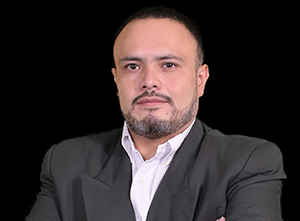Sound of freedom

By: Hugo Marcelo Balderrama - 11/09/2023
Guest columnist.Share:
The movie that has the same name as this article inspired me to write it. It is not easy to write about child sexual abuse and exploitation. However, it is worse to remain silent, because, with the complicity of prosecutors, judges, politicians and police, millions of children around the world end up being devoured by perverts, that includes many children in Bolivia.
In 2021, the United Nations Office on Drugs and Crime (UNODC) published a report revealing that the number of children who are victims of trafficking has tripled in the last 15 years. Girls are prostituted, while boys are used in forced labor or turned into mercenaries. The document reveals that traffickers choose their victims among the most vulnerable sectors, for example, migrants and families in poverty.
The “business” of sexual exploitation is on its way to becoming the most profitable for transnational crime. In a manner analogous to drug trafficking, child sexual exploitation networks have surpassed the security of several countries, and are capable of moving with impunity across several borders.
Ariel Ramírez and Elizabeth Zabala, sociologists at the Munasim Kullakita foundation in La Paz, explain that Bolivian women, especially those from the east of the country, are illegally introduced for purposes of sexual exploitation to Argentina, Peru and Chile.
The route that a girl follows to get to Peru or Chile from the east or the Bolivian Chaco begins in some province, connects with the capital of Santa Cruz and then goes to Cochabamba via Yapacaní. Then they follow routes such as Bulo Bulo, Chapare or Quillacollo to reach La Paz towns such as Caranavi, Apolo, El Alto and finally Copacabana or Desaguadero, on the border with Peru. Once on the Peruvian side, they take them to mines in Arequipa, Puno, Juliaca and others where there is exploitation of minerals, especially gold, Ramírez told the newspaper El Deber in September 2017.
Along the same lines, the group InSight Crime revealed that Bolivia is a country of origin and transit for both national and international human trafficking. A large number of the victims are foreigners passing through the country, while other Bolivian citizens are trafficked to Spain, the United States and nearby countries such as Brazil, Chile, Peru and Argentina. Furthermore, in the last decade the number of cases of human trafficking and smuggling reported in Bolivia grew 10 times.
For its part, in 2018, the United Nations Children's Fund (UNICEF) published the document titled: Commercial sexual exploitation of girls, boys and adolescents. There it was reported that the regions of Chapare, especially in Ivirgarzama and Shinahota, and Caranavi are red zones, since the brothels are full of girls offering their sexual services. However, traffickers are practically throughout the national territory.
Is the crisis in Bolivia so great that society and the State tolerate children being used as raw material in criminal businesses?
Yes, because in Bolivia none of the foundations of a Republic remain (rule of law, independent justice, free elections and citizen security). Today's Bolivia is a narco-state like Venezuela, Nicaragua and Cuba. Evo Morales' coca unions, apart from being the cause of hundreds of deaths, are an important part of the drug trafficking chain. The institutions in charge of national security (Bolivian Police and Armed Forces) are impregnated with corruption and crimes. The honorable uniformed men, those who put their heart forward to defend the country, are imprisoned. Bolivia is a kidnapped homeland, I hope one day it hears the sound of freedom.
«The opinions published herein are the sole responsibility of its author».